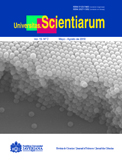Abstract
Metformin is a synthetic biguanide first described in the 1920´s as a side product of the synthesis of N,N-dimethylguanidine. Like other related biguanides, metformin displays antihyperglycemic properties, and has become the most widely prescribed oral antidiabetic medicine around the world. Intriguing recent evidence suggests that metformin has chemopreventive and direct antitumor properties, and several ongoing clinical studies around the world are using this agent alone or in combination with chemotherapeutic schemes to determine prospectively its safety and efficacy in the treatment of human cancer. Notably, immune activating effects of metformin have recently been described, and may support a notion put forth in the 1950s that this agent possessed antiviral and antimalarial effects. However, how these effects may contribute to its observed antitumor effects in retrospective studies has not been discussed. Mechanistically, metformin has been shown to activate liver kinase B1 (LKB1) and its downstream target AMP-activated kinase (AMPK). The activation of AMPK has been proposed to mediate metformin´s glucose lowering effect, although recent evidence suggests that this agent can inhibit electron transport in hepatocyte mitochondria resulting in AMPK-independent inhibition of hepatic gluconeogenesis. Likewise, albeit activation of AMPK and the resulting inhibition of the mammalian target of rapamycin (mTOR) signaling have been suggested to mediate the antitumor effects of metformin, AMPK-independent growth inhibitory properties of this agent in tumor cells have also been described. Here we present a brief review of the signaling, metabolic, and immune effects of metformin and discuss how their interplay may orchestrate the antitumor effects of this agent. In addition, we provide the rationale for a compassionate use study of metformin in combination with metronomic chemotherapy.
Key words: metformin, cáncer, AMPK, metabolism, diabetes
Univ. Sci. is registered under a Creative Commons Attribution 4.0 International Public License. Thus, this work may be reproduced, distributed, and publicly shared in digital format, as long as the names of the authors and Pontificia Universidad Javeriana are acknowledged. Others are allowed to quote, adapt, transform, auto-archive, republish, and create based on this material, for any purpose (even commercial ones), provided the authorship is duly acknowledged, a link to the original work is provided, and it is specified if changes have been made. Pontificia Universidad Javeriana does not hold the rights of published works and the authors are solely responsible for the contents of their works; they keep the moral, intellectual, privacy, and publicity rights. Approving the intervention of the work (review, copy-editing, translation, layout) and the following outreach, are granted through an use license and not through an assignment of rights. This means the journal and Pontificia Universidad Javeriana cannot be held responsible for any ethical malpractice by the authors. As a consequence of the protection granted by the use license, the journal is not required to publish recantations or modify information already published, unless the errata stems from the editorial management process. Publishing contents in this journal does not generate royalties for contributors.



